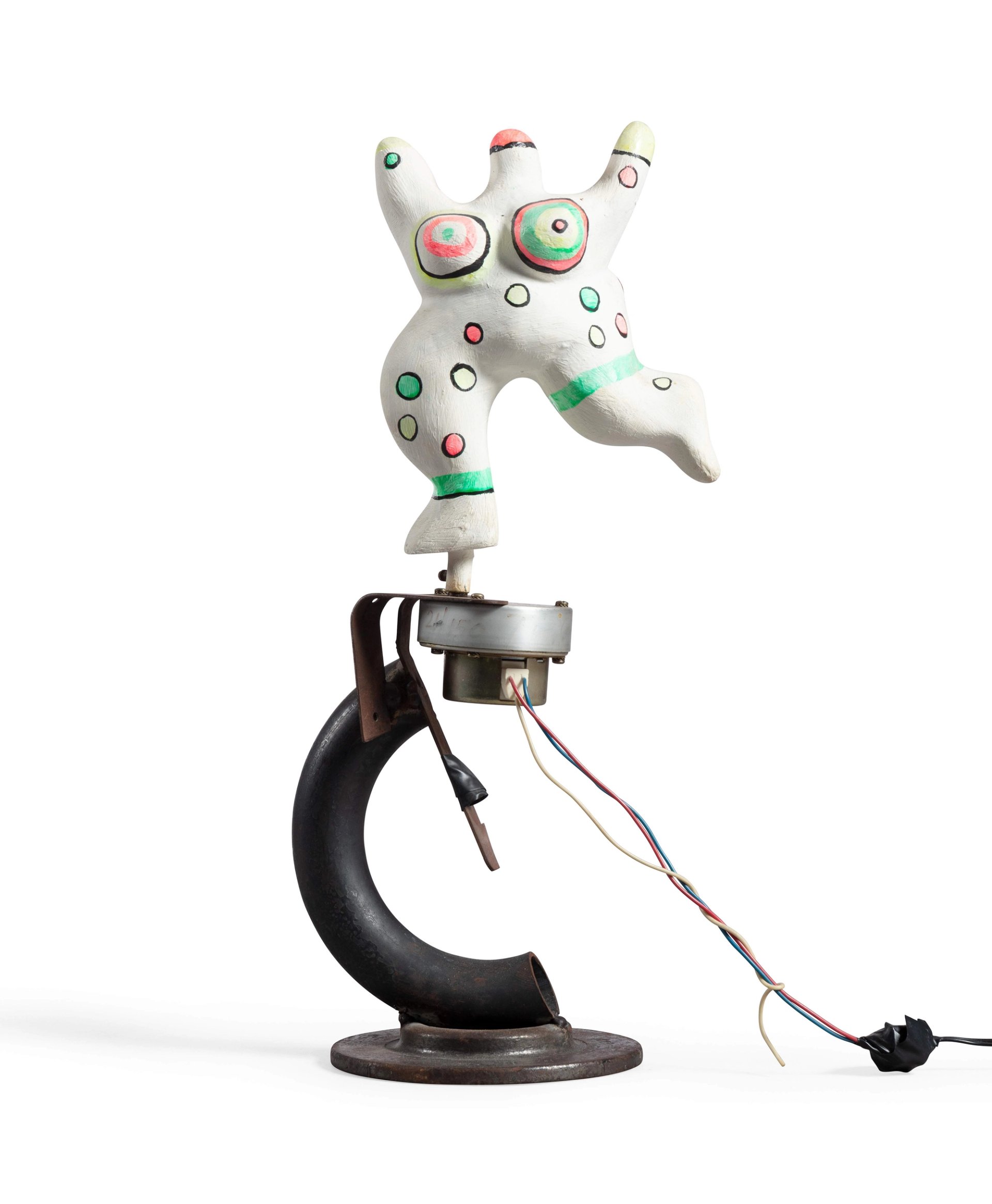Kinetic energy: events across Europe and the US celebrate Jean Tinguely anniversary
A radio broadcaster once asked Jean Tinguely whether his machines looked like him. The Swiss artist is best known for his Dadaist kinetic sculptures, mechanical things with cogs and spikes that whirr and clatter—and often self-destruct. “Do my machines look like me?” he replied. “I really rather hope they don’t! Because they express a certain amount of excitement, of madness even.” Behind it all, he said, he himself remained “relatively calm and stable”.
“Well, how do you live?” asked the journalist. You can almost hear the artist, then 55, smile that smile as generous as his tufted eyebrows and moustache, as he appears to fully contradict himself. “My life does revolve around my machines,” he said. “I am quite perturbed by my work, quite obsessed, always disturbed by my ideas.” To his mind, the only constant in life was transformation and movement. The illusion of a stable constancy—of something immutable—he found distressing.
That hectic effervescence takes centre stage throughout 2025 in a series of events, exhibitions and symposia organised in institutions across Europe and the US, to celebrate what would have been Tinguely’s 100th birthday.
Complicated relationships
Tinguely left behind a confounding body of work. Its relevance has increased even as the challenge of keeping it alive has intensified. His family legacy, as demonstrated by several of this year’s exhibitions, was equally complex. A show at the Lehmbruck Museum in Duisburg, Germany (until 24 August), focuses on his working relationship with the Swiss artist Eva Aeppli, to whom he was married between 1951 and 1960. Aeppli played an important role not only in Tinguely’s career move to Paris in 1952, but also his subsequent relationship with the artist Niki de Saint Phalle, whom he married in 1971.
Jean Tinguely and De Saint Phalle and her granddaughter Bloum Cardenas Photo: Laurent Condominas; © Niki Charitable Art Foundation, courtesy of the foundation and Hauser & Wirth
The work that came out of that second partnership, meanwhile, is the basis for two major shows at Hauser and Wirth Somerset (17 May-1 February 2026) and the Grand Palais in Paris (20 June-4 January 2026). As Bloum Cardenas, De Saint Phalle’s granddaughter and a trustee of the Niki Charitable Art Foundation puts it, “Eva really motivated him to be an artist. And, when he felt like he’d really arrived—‘Moi, l’artiste!’—Niki provoked him in a way that would remain a kind of game between them.”
If Cardenas maintains that all three benefited from a strong web of relationships that lasted until the end, she nonetheless describes Tinguely as a coureur de jupons—a womaniser. His son, Jean-Sébastien, was born to the Bulgarian painter Milena Palakarkina months after Tinguely’s death in late 1991.
Yet even after they lived separately, Tinguely would arrive in De Saint Phalle’s home, making it clear to “the lover of the hour” that he was back. He would take up residence in her studio, and do what De Saint Phalle called “his shopping”, selecting whichever bits of what she was working on that he liked as a basis for collaboration.
The Crocrodrome revisited
In 1977, to mark the opening of the Centre Pompidou, Tinguely worked with De Saint Phalle and several other artists, under the art collective Zig et Puce, on the Crocrodrome. This 30m-long dragon-like ghost train took up residence in the Forum—or lobby—of the new museum. De Saint Phalle made its mechanical head. On its flank, the Romanian-Swiss artist Daniel Spoerri installed a Musée Sentimental and a Boutique Abérrante. The sculptor Bernhard Luginbühl coated one of the creature’s paws with chocolate. And six months later, they destroyed it all in a flamboyant performance, metal collapsing on concrete and Tinguely falling in the process and hurting his back.

De Saint Phalle and Tinguely’s Nana Dansant (1976) © 2025 Niki Charitable Art Foundation
The Museum Tinguely in Basel has commissioned the British artist Rebecca Moss and the Swiss sculptor Augustin Rebetez to create an installation inspired by this happening. Titled Scream Machines: Art Ghost Train, the piece will be inaugurated on 22 May during an actual birthday party for the artist. The museum’s director Roland Wetzel says everyone is invited, so long as they sport a moustache, as Tinguely did. It is a gesture not dissimilar to how the artist convened gatherings, where everyone, whether a government minister or a studio assistant, was treated the same. People still come up to Jean-Marc Gaillard, one of Tinguely’s former assistants and now a conservator at the museum, saying they too wore a green hat at one of his dinners. “When he entered a room, the room was full—of him,” Gaillard says. “It was pure merriment. He brought everyone together.”
And when the end did come, it was meteoric. Gaillard describes him living as if aflame. “He burned until the end and it cost him his life. He died at 66 because he burned too hard.”
• Mechanics and Humanity: Eva Aeppli and Jean Tinguely, Lehmbruck Museum, Duisburg, until 24 August; Niki de Saint Phalle & Jean Tinguely: Myths & Machines, Hauser & Wirth Somerset, Bruton, 17 May-1 February 2026; Niki de Saint Phalle, Jean Tinguely, Pontus Hultén, Grand Palais, Paris, 20 June-4 January 2026




